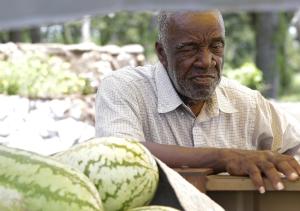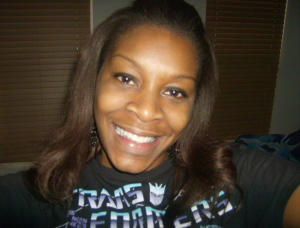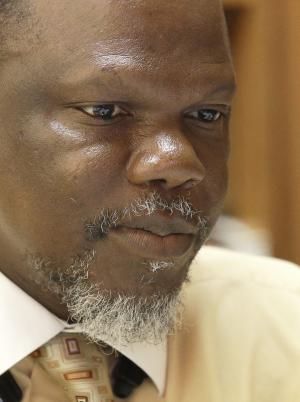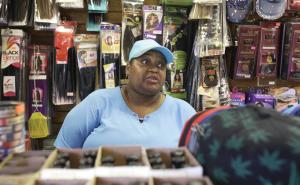HEMPSTEAD, Texas (AP) — In the searing 100-degree Texas heat, Sylvester Nunn uses three worn beach umbrellas to protect himself and the produce piled in the bed of his old Chevy pickup truck as he carries on a generations-old summer tradition.
The 78-year-old is selling watermelons by the roadside just outside Hempstead, where the perfect combination of sandy soil and rainfall make this the watermelon capital of Texas. During the first half of the 20th century, the area was the nation's largest shipper of the sweet red fruit.
But it's a more troubling tradition — of racial strife — that has resurfaced here in the days since a black woman named Sandra Bland died in the county jail after a traffic stop by a white state trooper.
Video of the confrontational stop ignited long-simmering passions and caused some blacks to raise their guard around law enforcement in Waller County and the county seat of Hempstead, once known as "Six Shooter Junction" because of white supremacist violence in the 1800s.
"I've lived here my whole life," said Nunn, who is black. "I know how it could happen, but nothing's happened to me. It's been all right with me."
Other people insist the area about 50 miles northwest of Houston has left its troubled past behind.
View gallery

Sylvester Nunn leans against his pickup and talks about growing up in Waller County Wednesday, July …
Bland, a 2009 graduate of nearby Prairie View A&M University, had just accepted a job at her alma mater when she was jailed July 10 for allegedly assaulting the trooper who pulled her over for an improper lane change.
Three days later, the woman from the Chicago suburb of Naperville was found hanged in her cell — a suicide, according to a medical examiner. Bland's relatives and other supporters dispute that finding.
The FBI is leading an investigation.
"It's a sad thing," Michael Wolfe, Hempstead's mayor since 2004 and the city's third black mayor since the 1980s, said of Bland's death and the negative attention it has drawn. "It is not a true reflection of people who live here. It creates a level of animosity that may not be true. The community has changed tremendously."
District Attorney Elton Mathis acknowledges the county "does and did have a lot of things that went on here that we're not particularly proud of, as far as racial interaction."
View gallery

In this undated photo provided by the Bland family, Sandra Bland poses for a photo. The family of Bl …
Mathis said he could understand how some people "looking at some of the bad things in our past would jump to the conclusion that this was a murder and not a suicide."
But, he added, "people need to realize there is a new generation in control of government here ... a more progressive generation."
Waller County was named for Edwin Waller, a signer of the Texas Declaration of Independence from Mexico in 1836, who four years later became the first elected mayor of Austin. Whites make up 44 percent of the 47,000 residents, Hispanics 29 percent and blacks 25 percent.
First settled in the early 1820s, the area became home to slave-labor cotton plantations. Hempstead was incorporated in 1858 thanks to a railroad terminus.
The plantations were dismantled with the end of the Civil War in 1865. Three years later, historical records report a race riot, followed by unrest in the 1880s, when a White Man's Party was established to blunt active black political participation in the county where blacks outnumbered whites.
View gallery

Michael Wolfe, Hempstead's mayor since 2004, reflects on the community he's grown up in Wedn …
That's when violence blamed on the Ku Klux Klan and other extremist groups gave it the "Six Shooter" sobriquet.
More recently, voter intimidation and voting-rights complaints have arisen from students at Prairie View A&M University, a college established in 1876 specifically to train black teachers.
The complaints led to a federal lawsuit. The district attorney at the time, in 2004, reached a settlement and apologized. But the issue resurfaced only two years later and again in 2008, when additional early voting sites in the county were established only after federal pressure.
"There's a lot of prejudice going on," said Eugene Hood, citing a history of police harassment as he cut hair at Chad's Barber Shop on University Drive, just south of where Bland was arrested outside the main entrance to the university.
Marie Armstrong of Dallas, a Prairie View senior, remembers being pulled over and ticketed for a broken brake light and being forced to go court. She wished police would exercise some judgment.
View gallery

Resa Henderson works behind the counter at the A-1 Variety Flea Market, Beauty Supply & Apparel shop …
"I'm not saying he was wrong," she said of the officer who stopped her. "We're college students. I was just going down the street. I got it fixed the next day."
Resa Henderson, 48, has lived in the area all her life and said she has never felt discrimination.
"I try to stay out of trouble," she said from behind a counter at the A-1 Variety Flea Market, Beauty Supply & Apparel shop where she works now after a 20-year nursing career.
Sheriff Glenn Smith has been singled out by some activists as the first head that needs to roll in the wake of Bland's death.
Smith was suspended for two weeks in 2007 and ordered to take anger-management classes after using profanity and pushing a black man during an arrest, according to Patricia Cernosky, Hempstead's mayor pro tem.
He was fired as Hempstead police chief in 2008 and then elected county sheriff.
"I'm not a racist," Smith insisted, blaming "small-town politics." He plans to seek re-election next year.
Jessica Cotton, a junior at Prairie View from Houston, said she's never had any problems with law enforcement, but what happened to Bland gave her pause.
"It could have been me," she said.